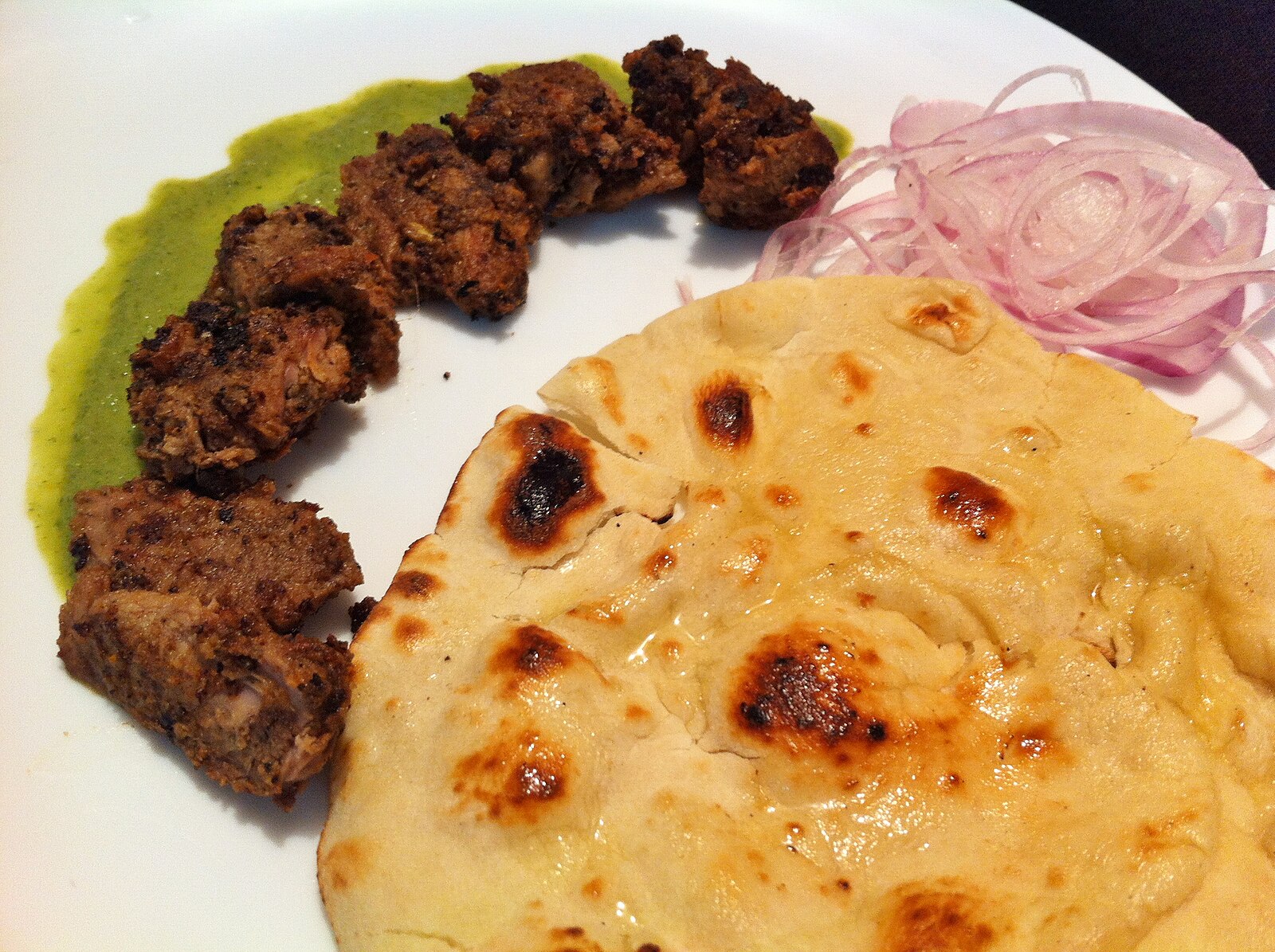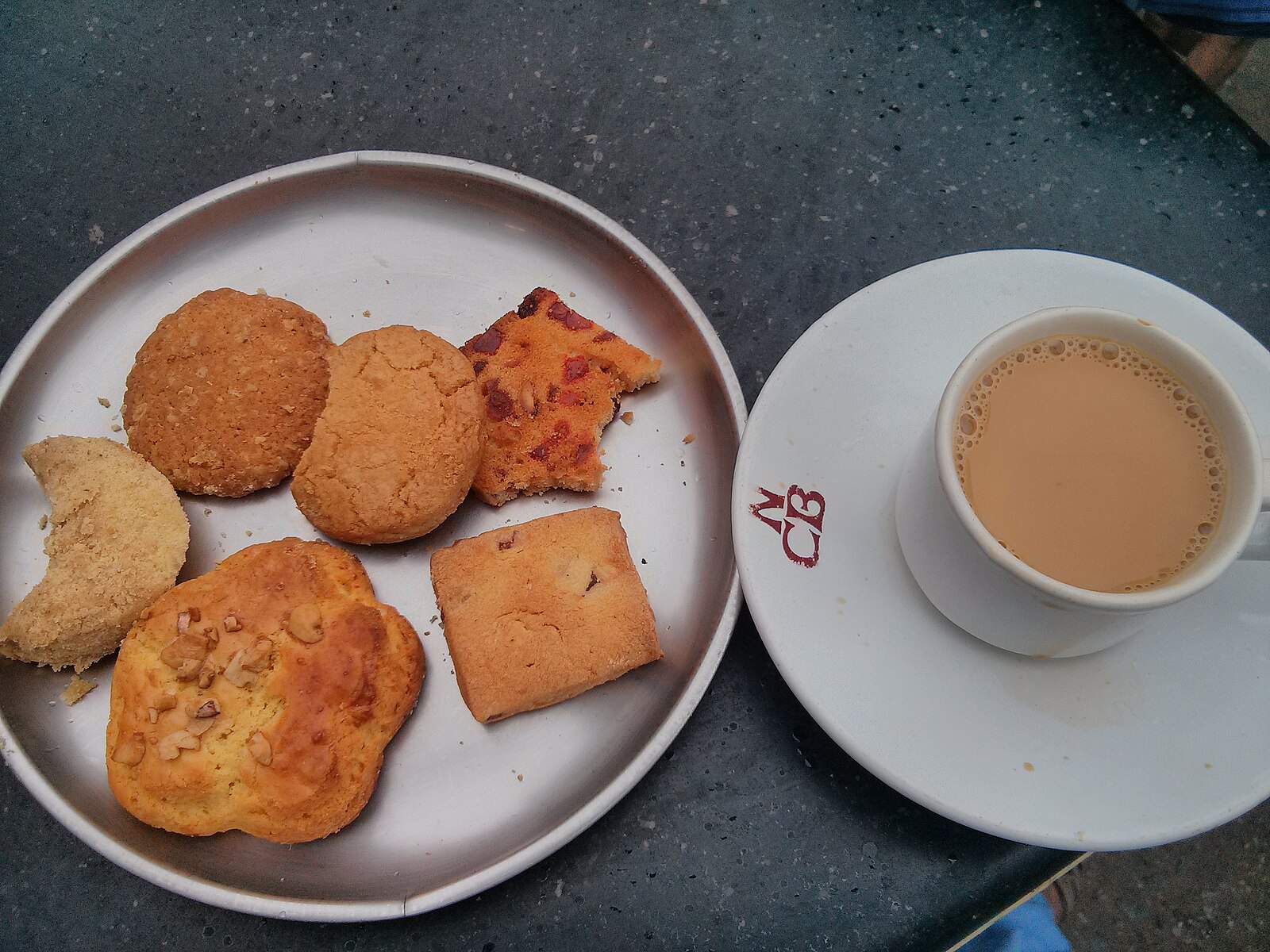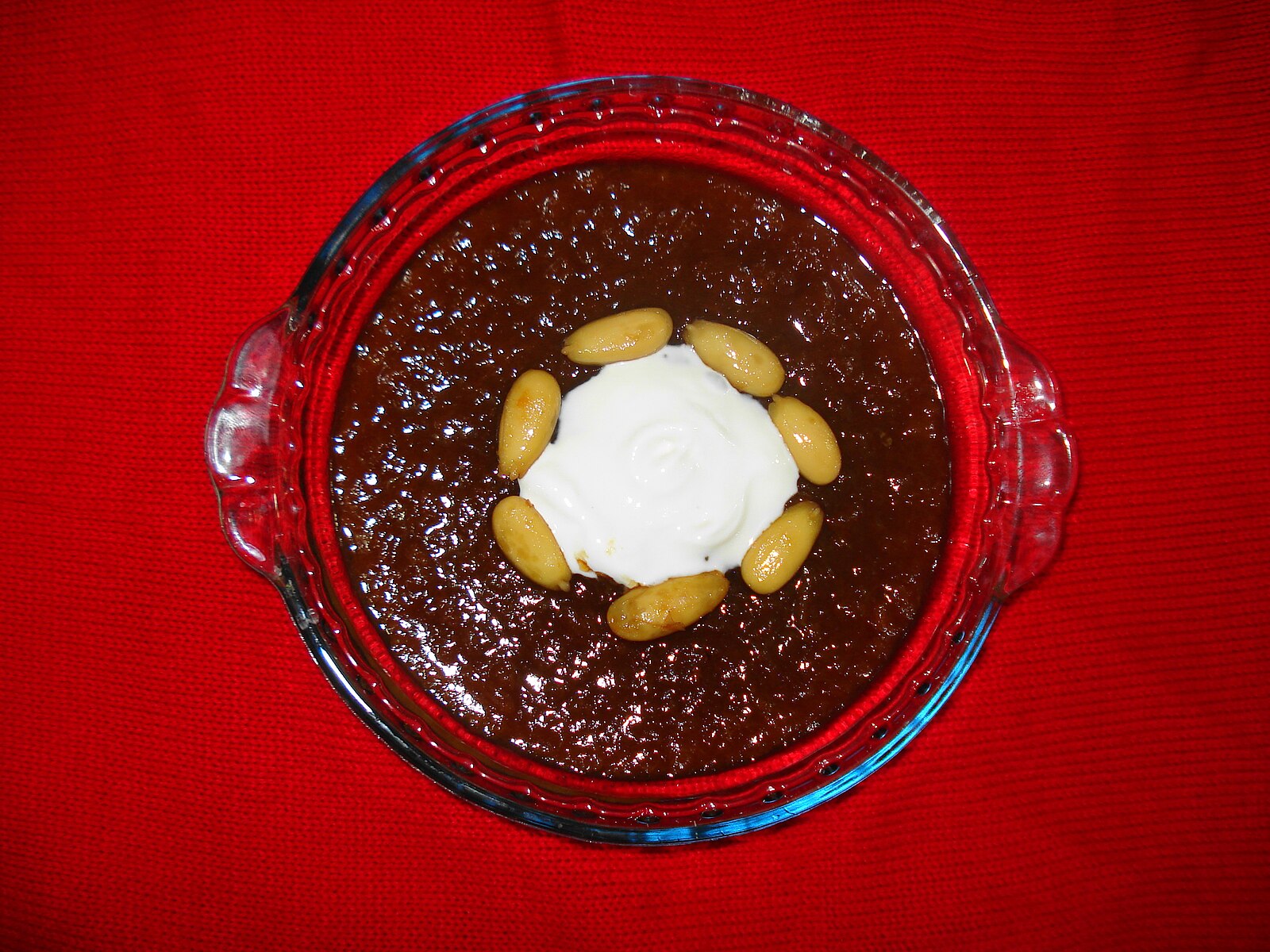The year is 1725. It is a cool November morning in Hyderabad, a city founded by Mohammed Quli Qutb Shah. Bustling bylanes converge around Charminar, its tall minarets whispering stories of the Shah’s triumph over a devastating plague.
Beyond the towering structure, a flash of yellow flutters carelessly in the clear, blue sky. It is the flag of Mir Qamar-ud-din Khan Siddiqi, the first Nizam of Hyderabad. On it, sitting between two vivid stripes of yellow, is a large kulcha (flatbread). The symbol tells a curious story of how Siddiqi became the Nizam.
The legend goes that before his rise to power, Siddiqi met a Pir (saint) who invited him to a daawat (feast) where he was served warm kulchas wrapped in a yellow cloth. Siddiqi, unable to resist, devoured seven. Watching him eat, the saint prophesied that he would one day become Nizam, and that his lineage would rule for seven generations. The prophecy came true, and Siddiqi became the first Nizam and founder of the Asaf Jahi Dynasty in 1724.
Welcome to Hyderabad, the city of food
It is 2025, and you are staring at the neon lights of Hotel Nayaab. The lights blink red and green in a steady rhythm, cutting through the hush of the sleepy city. It is only 4 am, yet a line already stretches along the narrow lanes of Chatta Bazaar in Old City. The scene vastly differs from 1725—Hyderabad is now wider, faster, and more crowded–but the four minarets still stand tall. Though the flag no longer flies above, three centuries later, the city beneath remains the same, a culinary mecca.
Inside Hotel Nayaab, the kitchen stirs awake long before dawn. By 3 am, red and orange curries simmer in giant haandis (cooking pots), perfuming the air with clove and cardamom. On the opposite side, naans are rolled fresh and slapped onto the hot walls of a tandoor.

Here, even breakfast carries the weight of legacy, and flavour can be found in conversations sprinkled with memories. “Isko koi beat nahi kar paayega! (No one can beat this!),” declares Chef Rizwan Khader when asked about the uniqueness of Hyderabadi food. He adds that Hyderabad’s tehzeeb (good manners) and mehmaan nawaazi (hospitality) make food the heart of community gatherings and relationship building.
Story continues below this ad
Food writer and chef Ruchira Hoon echoes Khader’s assertion. She believes that eating is a living tradition. “Isn’t it the only possible tradition, other than folklore and folktale, which has some tangible effect on people? Because everybody has to eat. Food then tells a story of sustenance, memory, and living—a story which is passed down to us,” she says.
The atmosphere at Nayaab reflects Hoon and Khader’s sentiments. Its breakfast menu—Paya-Naan, Khichdi-Khatta, Keema-Roti—blends traditions shaped by centuries of migration, conquest, and adaptation.
Paya is a rich goat trotter stew, tracing its roots to Central Asia’s Pacha. As it travelled east between the 14th and 20th centuries, it took on new textures and spices, eventually becoming thicker and silkier in Hyderabad.
With it comes the popular Char Koni Naan, the four-cornered bread from Purani Haveli kitchens, which is proofed for 24 hours and traditionally baked in underground tandoors. Some are star-shaped, others pan-shaped, each meant for different occasions.
Story continues below this ad
Naan is believed to have come to the city through the conquests of the Delhi Sultanate in the 14th century. The oldest naan store in Hyderabad, however, dates back to the era of the Nizam: Munshi Naan was established by Mohammed Hussain Saheb in 1851. Saheb was a munshi (clerk) during the rule of Bahadur Asif Jah, the fourth Nizam of Hyderabad. When his naan business gained popularity, people began calling it Munshi Naan.
Then there’s Khichdi-Khatta, Hyderabad’s understated breakfast hero. To a North Indian palate, dry khichdi for breakfast might seem odd, but in Hyderabad, buttery lentil rice paired with Til Ka Kacha Khatta, a tangy sesame-peanut chutney, is a morning staple. Even 14th-century explorer Ibn Battuta noted, “Munj is boiled with rice, then buttered and eaten. With the name Kishri, they have it for breakfast every day.”
The exact origin of khichdi is difficult to ascertain. The earliest mentions of the dish can be found in the Mahabharata. However, it became widely popular during the Mughal rule, with Akbar, Jehangir, and Aurangzeb each having their preferred versions.
Khichdi’s hero accompaniment, a sour chutney, reflects the city’s love for tang: a flavour motif that runs through Hyderabadi cuisine. As food historian Lizzie Collingham notes in an article in the Goya journal, early Deccani cuisine beautifully blended shredded coconut, curry leaves, fenugreek, and tamarind with foreign influences.
Story continues below this ad
It is said that the Nizams had a special fondness for breakfast, one that many Hyderabadis share even today. It’s no surprise, then, that the breakfast menu of Hotel Nayaab is rooted in traditions that emerged—or were popularised—in the Nizam’s kitchen.
From royal kitchens to the common man’s stove
While paya and khichdi—steeped in legacy and a flair for reinvention—carry you through the morning, lunch tells stories of improvisation that are almost as rich as the food itself.
Ask any local about Hyderabadi ingenuity, and you are likely to hear the story of Patthar ka Gosht, a dish born out of royal panic and roadside innovation, dating back to the rule of the sixth Nizam, Mir Mahboob Ali Khan Siddiqi, also known as Asaf Jah VI.
Legend has it that the Nizam’s cooks once forgot their tools on a hunting trip. Faced with hungry royalty and no skewers, they heated a stone over firewood and seared meat directly on it. Necessity became the mother of delicacy that day.
Story continues below this ad
Shaik Shoukat Vali, 44, who has lived in Hyderabad for the majority of his life and considers himself a true foodie, says that Patthar ka Gosht is among his favourite authentic Hyderabadi foods. “I had it in a restaurant called Khan Saab, which I think is closed now. But, earlier, in the Old City, Patthar ka Gosht was never served in any hotels, it used to be cooked in the street—cooked on stones like how it was originally made—and served on the street too!”
 Patthar ka Gosht is a dish born out of royal panic and roadside innovation, dating back to the rule of the sixth Nizam, Mir Mahboob Ali Khan Siddiqi, also known as Asaf Jah VI. (Wikimedia Commons)
Patthar ka Gosht is a dish born out of royal panic and roadside innovation, dating back to the rule of the sixth Nizam, Mir Mahboob Ali Khan Siddiqi, also known as Asaf Jah VI. (Wikimedia Commons)
As Vali suggests, over the years, food from the Nizam’s royal kitchen has become part of the everyday palate of the common man. Still, the stories don’t fail to amaze and amuse.
For instance, Falaknuma Palace, today a heritage hotel owned by the Taj group of hotels, was once the residence of Mir Mahboob Ali Khan Siddiqi. The converted hotel has retained the opulent taste of the Nizam, which is reflected in the Italianate entrance lobby and a library with a carved walnut roof. Most fascinating of all, however, is the Nizam’s dining room.
The room features a 101-seater dining table, the largest one in the world, adorned with rosewood carvings and green leather upholstery. The edges of the room’s walls are decorated with paintings of royal delicacies—from peacock meat to biryani. People say that the Nizam would point to one of the 28 paintings depicting various food items in the 101 Dining Hall, and the royal chefs would prepare that dish for the day’s meal.
Story continues below this ad
These dishes can be found in the Khwān Neʿmat-e Āṣafiya, a famous 19th-century cookbook with 680 recipes compiled by Ghulām Maḥbūb Ḥyderābādī, the manager of the kitchens of Nawab Sir Āsmān Jāh Bahādur, the prime minister of Hyderabad state from 1887 to 1894. It lists staggering demands: expensive saffron, special deghs (cauldrons), and as many as 20 ingredients ground into one masala. Until 1948, the last days of Nizam rule, these practices were upheld by khansamas (cooks).
Chai pe Charcha
In Hyderabad, as in the rest of the country, lunch is followed by the laziest hours of the afternoon. But the city reconvenes at 5 pm, when the sweet smell of milk, sugar, and cardamom pulls the locals from their afternoon slumber.
Here, however, tea is not just a beverage. It is a way of being. While it boils over a low flame, stories are exchanged over plates of hot luqmi and bun maska.
Luqmi, a Hyderabadi twist on the samosa, is a square, crusty pastry stuffed with spiced mutton mince—a nod to its Arabic root loqma, meaning morsel. Alongside it comes bun maska, a soft, buttered bun with roots in the Irani cafés established by Persian immigrants in the 18th and 19th centuries. These cafés, born from waves of migration and refuge, left behind not just architecture and tea culture, but an enduring affection for simple indulgences like bread, butter, and conversation.
Story continues below this ad
While luqmi and bun maska are served swaad anusaar or according to taste, the beloved Osmania biscuit—buttery, sweet, and salty—is ritualistically served on a white saucer with the milky Irani tea. It was created during the reign of the seventh Nizam, Mir Osman Ali Khan (1911–1948), when, during a hospital visit, he ordered biscuits to be served to recovering patients. Thus, a soft treat made of milk, cardamom, and flour was born.
These biscuits are best enjoyed with Irani chai, introduced by Persian settlers in the 19th century. “We have it (Irani chai) in our blood, and scores of cafes, big and small, serve thousands of cups of the delectable tea every day,” reads a Facebook post by Parsi Zoroastrians Worldwide. “Be it the Grand Hotel, the Garden Restaurant or the new chain of Niloufer Cafes, Irani Chai drinking culture is deeply embedded in the ethos of Hyderabad.”
Having grown up around Irani cafés, Yunus Lasania, historian and journalist, recalls the signature chai made of boiled milk and black tea liqueur, and the role they played as cultural equalisers. While aristocrats shaped the city’s palate, he notes that it was in these modest cafés that the local cuisine actually thrived.
 The Osmania biscuit was created during the reign of the seventh Nizam, Mir Osman Ali Khan and is best enjoyed with Irani chai that was introduced by Persian settlers in the 19th century (Wikimedia Commons)
The Osmania biscuit was created during the reign of the seventh Nizam, Mir Osman Ali Khan and is best enjoyed with Irani chai that was introduced by Persian settlers in the 19th century (Wikimedia Commons)
Vali echoes Lasania’s sentiment and puts it plainly: in the city, chai is a conversation, it is the first step towards forging a human connection; chai is sacred, and so is sharing it.
Story continues below this ad
“One day, my friends and I went to drink tea, and there were five of us. So, I told the waiter to bring five teas. That’s when my friend said, ‘What are you doing? Five teas? No. Never. No one drinks a full cup of tea.’ Then I learnt that if there are two people, order one cup of tea. If there are three people, order two cups. If there are five, order three cups and share. No one drinks the full tea,” Vali recounts, laughing.
He adds, “When you order tea, it is not like you drink it and leave. You can sit for hours in a hotel, and the owners would never tell you to go. You drink the tea. Then, when your friends come, you share the tea with them. That’s how it works here.”
Dum Biryani and Qubani ka Meetha: A Mughal legacy
After a full day of large meals, it is still dinner when the crown jewels—living archives of the Qutb Shahi and Mughal histories of the city—come out.
Hyderabadi Dum Biryani is the prime example of the city’s syncretic cuisine. The Qutb Shahis, of Persian origin, introduced their culinary traditions to the Deccan, blending them with local spices to create a distinct biryani. Mughal techniques like layering and dum cooking influenced the dish, which was later refined and popularised under the Nizams.
Today, the city’s defining meal is a confluence of Mughlai methods and Southern spices: rose water, saffron, cloves, and cardamom.
Biryani’s beloved companion, Mirchi ka Salan—a bold, tangy curry of green chillies, peanuts, sesame, and tamarind—traces back to Emperor Akbar’s coronation. Folklore says that Emperor Akbar’s fondness for Mirchi ka Salan made it a highlight during his coronation festivities. The flavourful curry, crafted from green chillies, peanuts, sesame seeds, coconut, and tamarind, was reportedly introduced in the royal court by one of the chefs, and it caught the king’s attention.
The Asaf Jahi dynasty that ruled Hyderabad embraced this legacy, further enriching its flavours and solidifying its status as a culinary emblem of the region. Over time, the chutney became a staple in Hyderabadi cuisine, cherished for its harmonious balance of heat, tanginess, and nuttiness. Today, it remains an essential accompaniment to biryani.
A vegetarian delicacy—almost as popular as biryani—that traces its roots to the Mughal rule is the Baghare Baingan: purple brinjal in a velvety peanut-coconut-tamarind gravy. “Baghara” means to temper or infuse with flavour, and this dish from Tashkent became a staple between the 16th and 19th centuries.
Another gift from the Mughals is Qubani ka Meetha, among Hyderabad’s most cherished sweets. The apricot-kissed Qubani ka Meetha—made of stewed dried apricots, custard, and sometimes ice cream—is said to be a result of Emperor Babur’s fondness for apricots, which Hyderabad adopted more enthusiastically than Delhi ever did.
Despite early interaction with the expanding Mughal empire through trade and migration, Mughal rule was officially established in Hyderabad in 1687, when Emperor Aurangzeb annexed the Golconda Sultanate. Though the Mughals controlled the region, their governors eventually gained autonomy, giving rise to the Asaf Jahi dynasty.
 The Qubani ka meetha is said to be a result of Emperor Babur’s fondness for apricots, which Hyderabad adopted more enthusiastically than Delhi ever did. (Wikimedia Commons)
The Qubani ka meetha is said to be a result of Emperor Babur’s fondness for apricots, which Hyderabad adopted more enthusiastically than Delhi ever did. (Wikimedia Commons)
From this melding of dynasties and traditions came Haleem, a Yemeni import that Hyderabad made its own. Originally a breakfast for Arab guards in Barkas, it evolved into a Ramzan staple. Unlike its cousins in Kashmir and the Middle East, Hyderabad’s version—rich, spiced, and slow-cooked—earned a Geographical Indication (GI) tag, becoming the first meat-based dish in the country to have a GI Tag.
Migrants from Yemen, particularly Hadhrami Arabs, came to Hyderabad under the rule of the Nizams, serving as guards and settling in the Barkas neighbourhood. Today, this area remains a vibrant reminder of the Arab connection, housing over 3 lakh people of Yemeni and Arabian descent.
Historian and columnist Sajjad Shahid summed up the city’s culinary culture, saying, “Hyderabadis are connoisseurs, and they love their food. They are not bothered about where it comes from. They adapt it to suit their own palate.”
Generations of Hyderabadis would agree.
